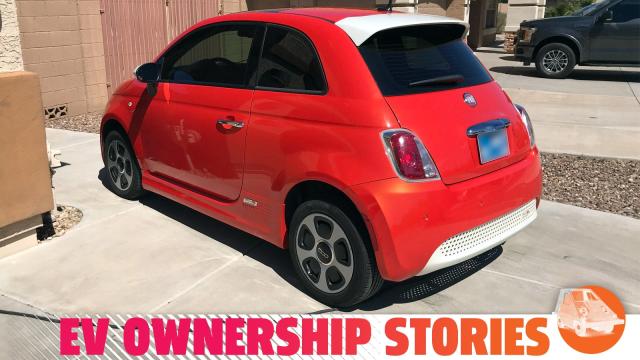Batteries degrade. It’s a fact of modern life we face in our cell phones, our wireless earbuds, and various other gizmos and gadgets we use on a daily basis. It impacts our cars, too.
Electric cars with lithium-ion batteries have been on the road since the late 1990s, with Nissan diving into development the day after Sony announced it had gotten mass production of the chemistry to work in February of 1990. It’s been just a little over a decade, though, since plug-in hybrids and fully electric cars with lithium-ion batteries began hitting showrooms in big numbers. Some of these vehicles have covered more than a hundred thousand miles, making now a great time to evaluate how their batteries have aged.
Not too long ago we issued a call for status reports on your old electric cars. We received submissions from owners of all kinds of EVs, from the first run of the Tesla Model S and Nissan Leaf, to less common vehicles like the Fiat 500e and BMW i3. A big thank you to everyone who responded! Here are some of your stories:
Rick’s Nissan Leaf(s)
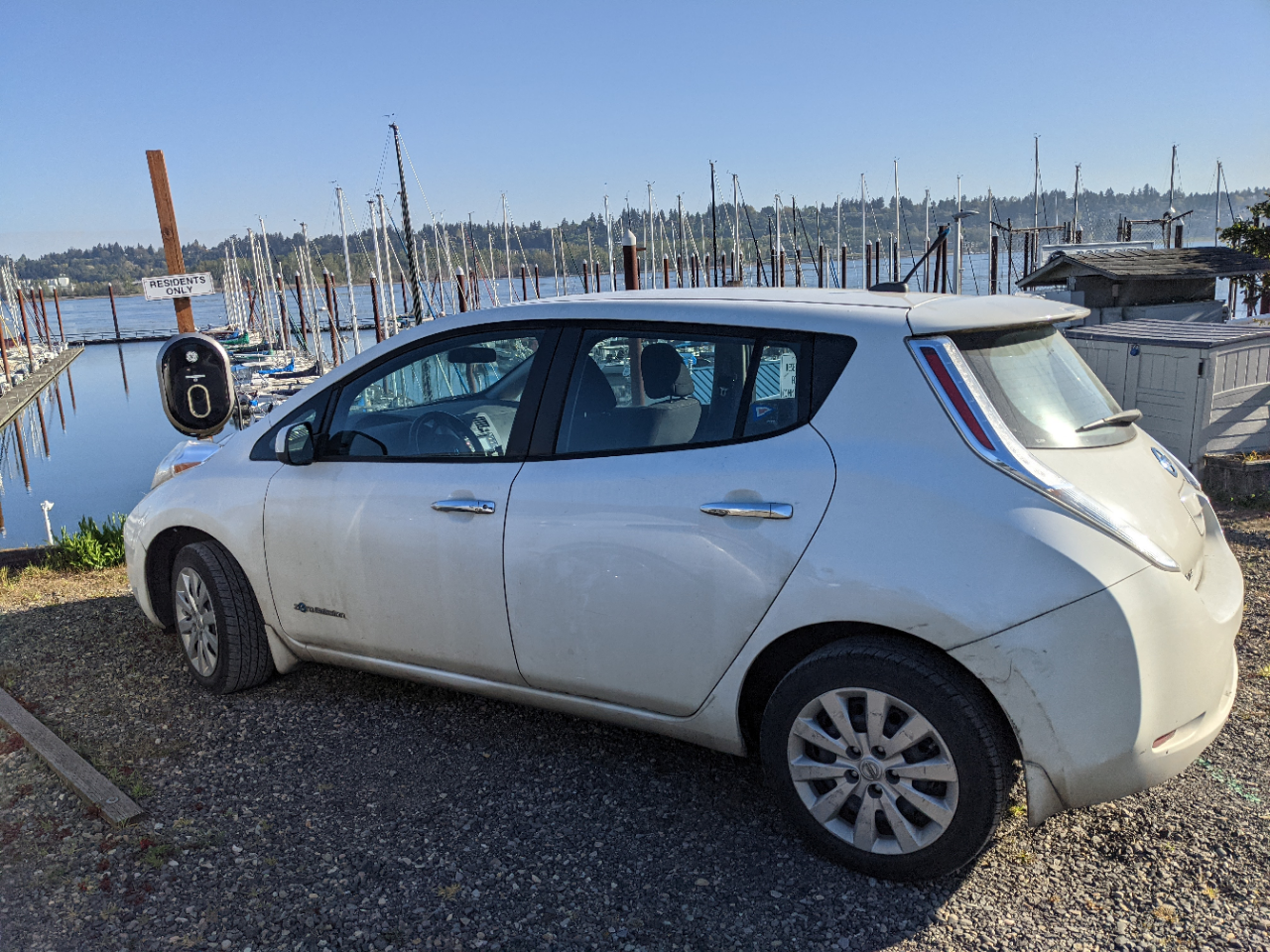
Rick from Oregon has owned not one, not two, but four Nissan Leafs over the past decade: a 2011 SL, 2013 S, 2014 S and most recently, a 2020 SV Plus, all with their original battery packs. While Rick doesn’t have the 2011 anymore, he says in the three years his family owned it, they put about 48,280 km on it. During that time, the 2011 lost two bars on its battery capacity indicator, which supposedly conveys between 78 and 72 per cent of full capacity.
Rick’s 2013 Leaf was a lease return he purchased used with 12,875 km on it; his family has since driven it for 32,000 more miles. His 2014 Leaf has gone even further, with 112,654 km on the odometer. Rick says the batteries in both of those cars have endured better. Unlike his 2011, neither has showed a loss of any capacity. But he’s also careful to charge them in the least harmful ways possible, forgoing the 480-volt DC fast charging option that early Leafs supported. Nissan claimed this method was capable of replenishing 80 per cent battery life in 30 minutes.
“We’re real easy on the batteries,” Rick told me. “On the 2013 we can’t do a quick charge because it doesn’t have the capability. On the 2014 we have never done a fast charge, which is probably good for the battery. We never charge either of them when the charge is above 80 per cent and virtually never let it get below 20, so I think that’s probably easy on the batteries. Basically, we haven’t had any trouble with the cars. The only money we’ve put into them is tires.”
John’s 2015 BMW i3
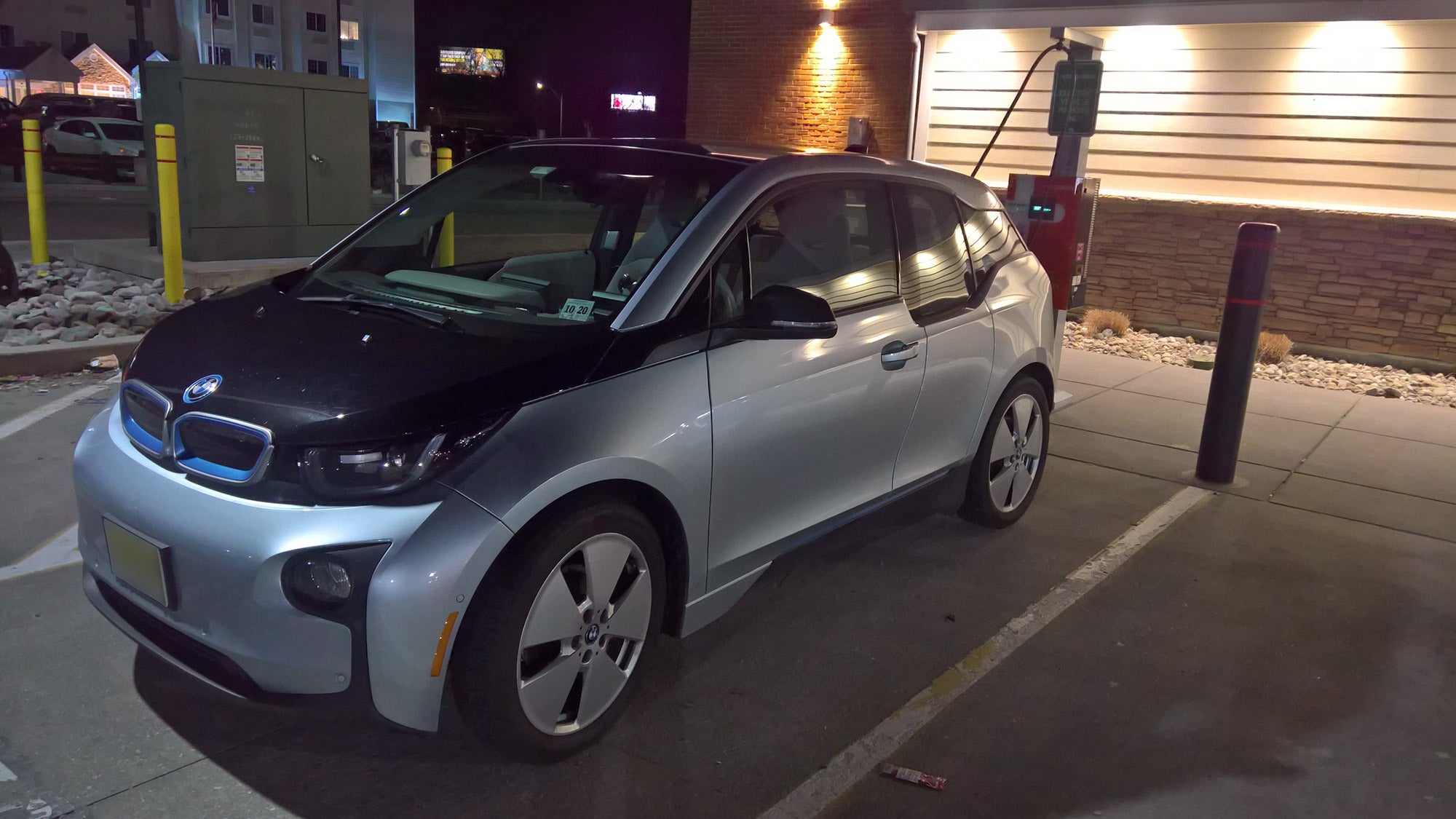
John from New Jersey purchased his 2015 BMW i3 as a certified pre-owned car from his local BMW dealer when it was three years old and had 64,374 km logged. It now has 128,748 km on the same battery pack. John says that through all of this, the car’s maximum range has depleted from the original 116 km to 62 miles, translating to a 14 per cent decrease in capacity.
John’s i3 is a range extender model, which means it has a two-cylinder gasoline engine acting as a generator that effectively turns the i3 into a plug-in hybrid, though it is technically a serial hybrid and not a parallel hybrid like your cousin’s Prius.
Cold temperatures can seriously hamper capacity and slow the battery’s charging rate, and they’re under even more stress when you add heating into the mix. Thus, John says the gas motor becomes extremely important when it gets chilly out. “During the coldest days of winter, the range extender is what makes the car work.” As a Jersey native myself, I deeply feel this.
The i3 is primarily used as a commuting vehicle, John told me. “Even with the limited range, the electric is usually sufficient.” As for charging, most of that happens at home, though John says he’d sometimes use the chargers at his work, and he’s used Chargepoint and EVgo fast chargers on “a handful of road trips.”
It “was a great introduction to EVs,” John said of his i3, which he’s since given to his son and daughter-in-law. Now he drives a Tesla Model 3 Standard Range.
“EVs are still in their infancy, but the Model 3 is light years ahead of the i3; even the newer version of the i3 is much better than my 2015.
All well and good then — John’s i3 appears to have held up respectably. Or, rather, did. Because a week or two after initially reaching out, John informed me that the car’s 12-volt battery kicked the bucket. You wouldn’t think that’d be of any great concern to range, but John said that when he replaced it, the i3’s computer reported the full 116 km once again.
Tony’s 2012 Tesla Model S P85
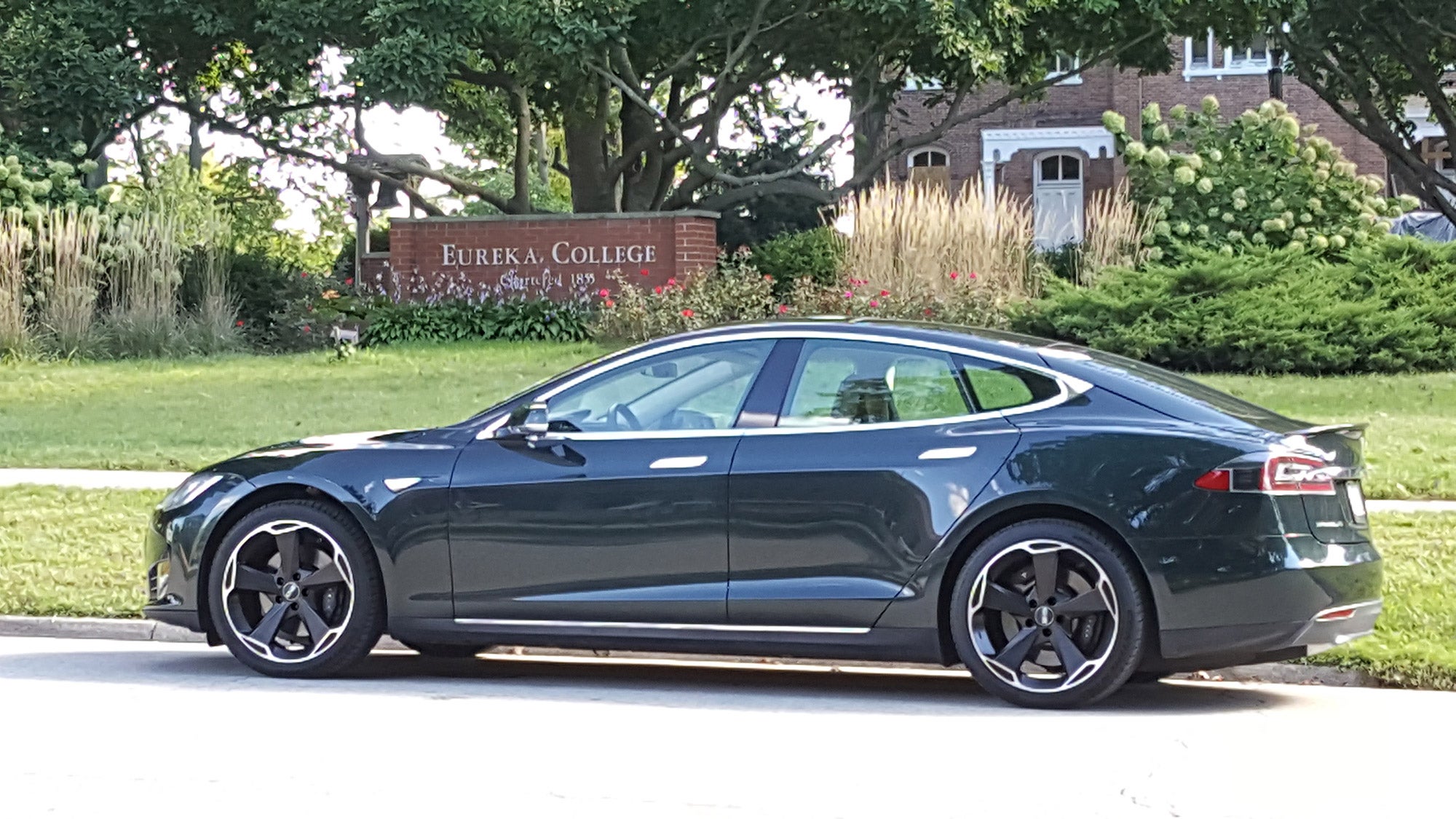
Tony from Illinois bought his 2012 Tesla Model S P85 certified pre-owned when it was three years old and had 8,047 km logged. Today the Model S sits at 76,170 km, and with no discernible capacity loss reported. The battery pack and contactor were replaced when Tony got the car as part of the certified pre-owned program.
The Model S is usually charged at home, Tony said, and occasionally at a Supercharger station when travelling. After the first 32,187 km, he replaced the Model S’ stock 21-inch rims for a set of 20-inch rims with wider, 275-millimetre tires in the back, as opposed to the 245-millimetre tires the car rolls on out of the factory. Following the change, “there was no appreciable change in range,” Tony told me. “Just much better handling!”
Seth’s 2013 Chevrolet Volt

When Seth purchased his used 2013 Chevrolet Volt four years ago, it had 77,249 km on the odometer, He’s added another 30,000 since then, and reports no noticeable loss in range.
“My round trip commute is 39 km, so other than very cold winter days when I’m running the cabin heater the entire time or a longer trip, I don’t use gasoline day-to-day,” Seth told me. “I’ve often had the car start the engine just to circulate the fuel in the lines and been forced to burn off tanks of gasoline because the Volt’s computer thought the fuel was getting too old. All that to say that I have been using the pack extensively since I bought the car.”
Seth says the battery pack has never been replaced, though the electrical system has required attention a few times. Luckily all of that occurred under warranty, though it’s gotten him thinking about whether it would simply make more sense to just buy a newer, more modern EV instead of paying for repairs when the next big bill comes. Especially when battery pack replacement on some models isn’t cheap.
As for charging and care, Seth says he typically tops up the car on a 240-volt stations at home and work. He’ll also start the engine before driving the car on very cold mornings to head off any damage to the battery pack. “I’ve read about Volts both pre- and post-purchase with very, very high mileage that have no discernible range loss,” he told me. “So I feel reasonably confident the pack itself will last.”
Brett’s 2014 Fiat 500E
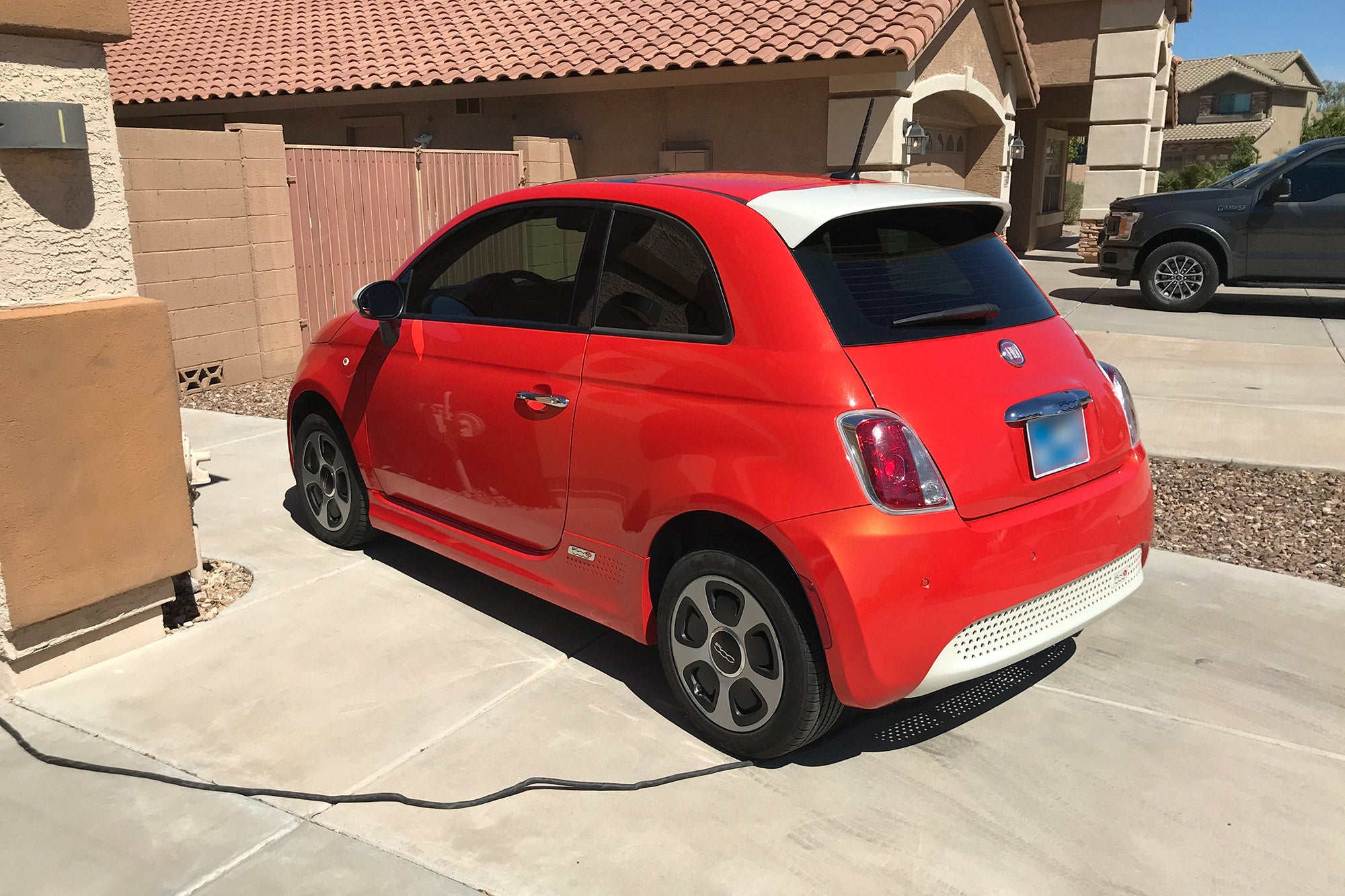
Brett’s 2014 Fiat 500E has an interesting story. He’s only had it for two months, but before that, Fiat Chrysler bought the car back in 2016 with only 10,622 km logged because it wouldn’t charge. “Chrysler did not mention what was fixed, but I have no reason to believe they replaced the battery,” he told me.
The car was later auctioned off, and appears to have spent the majority of its life in Reno before Brett picked it up in Phoenix in February. It now stands at 116,677 km. The Fiat is typically charged off 110-volt power, and Brett says he hasn’t had the car long enough to deduce any patterns in range. He does have some insights, though.
“From monitoring battery charge metre/miles travelled and calculating kilowatt-hours used from the charger versus the battery per cent charged, I have figured the battery has about 70 per cent of charge left,” Brett said. “Although the guess-o-metre will say I have 117-125 miles when fully charged, the reality is I have about 113 km range. Since the car has been in hot climates for the last four years, that is not surprising.”
Richard’s 2013 Ford Focus Electric
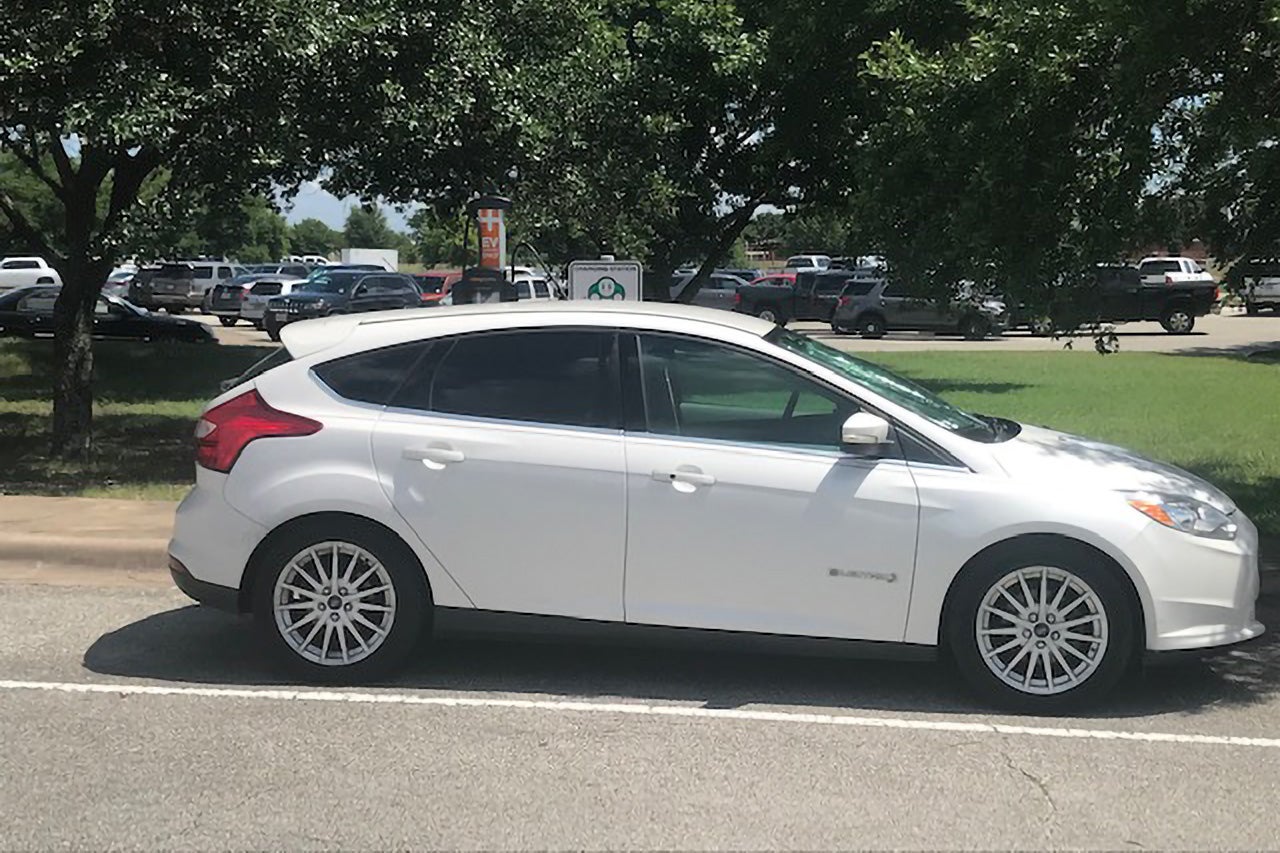
Richard from Austin wasn’t even planning to drive his 2013 Ford Focus Electric when he bought it used with 11,265 km on the clock. He wanted to take the batteries out and convert his Triumph GT6 race car to electric power. But the Focus was too nice, he says, and got him hooked on EVs.
Today the Focus has a little more than 128,748 km on it, and Richard says the range hasn’t diminished much. The car was advertised new with an EPA-estimated range of 122 km, but the way Richard drives it, plus age and a few modifications (thicker anti-roll bars and larger tires) have dropped that estimate down to about 93 km. Mileage will climb back up into the 60s if he’s conservative with the throttle and keeps it off the freeways. “It’s really sensitive to hauling arse,” he told me.
This Focus has had a decent bit of service in its life, and it’s mostly the dealer’s fault. “Around 60k I took it in for a routine check up and during some warranty work the Ford dealer shorted out a bunch of stuff and replaced my motor, axles, CV joints, transmission and put in a remanufactured battery,” Richard said. “FYI, the battery was fine before the incident at the dealership. I guess that is the learning curve on their mechanics and why I don’t wrench on it.”
Ken’s 2015 Tesla Model S 70D
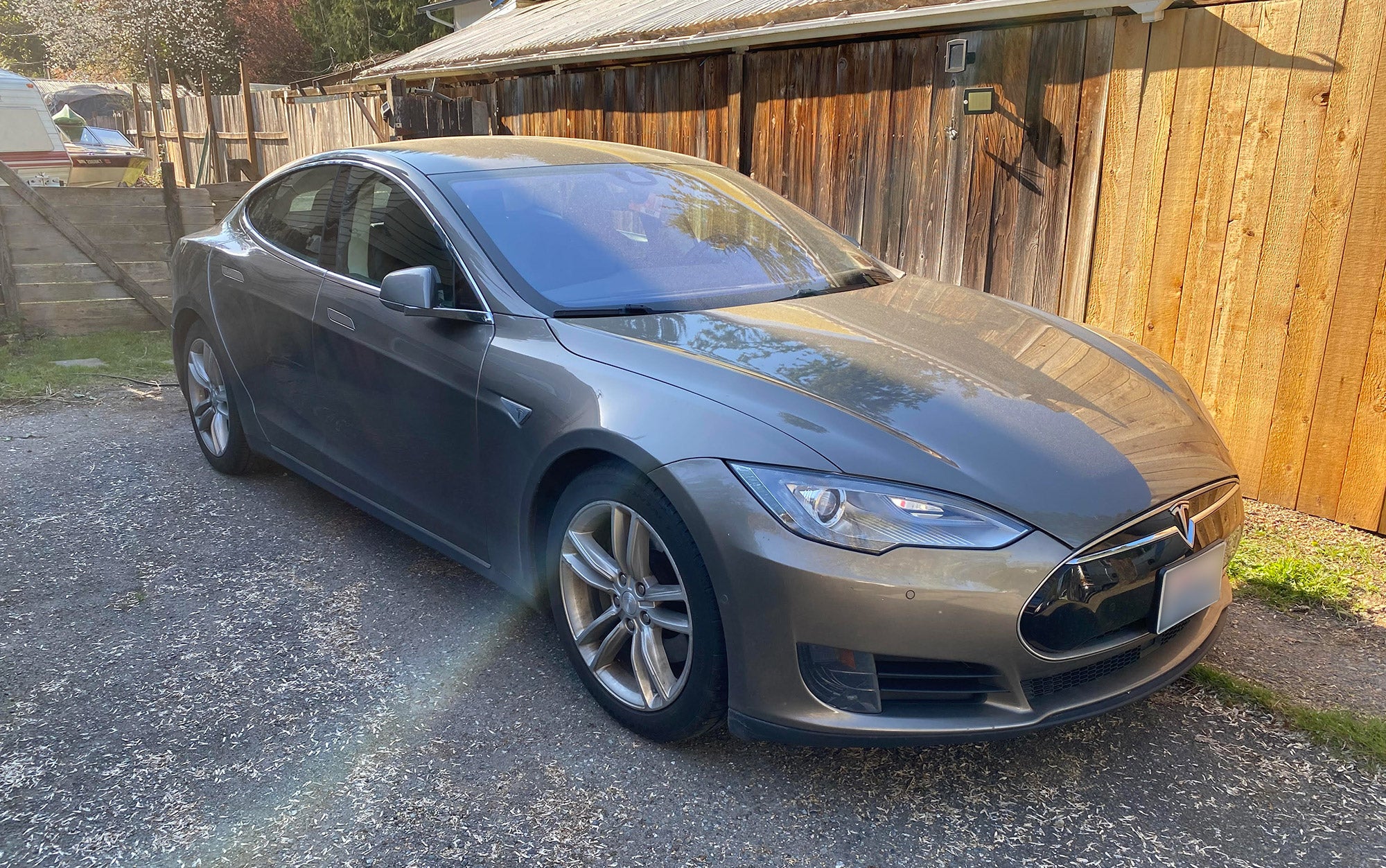
Ken from Washington State drives a 2015 Tesla Model S 70D he purchased in 2019. He’s put about 56,327 km on the car over the two years he’s had it, bringing the car’s total to 69,000 miles. The battery pack appears to be just fine — when new, it was rated for a 386 km range, though Ken says he’s never seen more than 232 in the real world. Still, he rarely uses the battery’s full capacity, choosing to cap charging at 80 per cent, which offers about 296 km.
As for how Ken charges his Tesla, he typically uses a 220-volt home charger, which he says replenishes 18 km of range every hour.
Grant’s 2013 Nissan Leaf
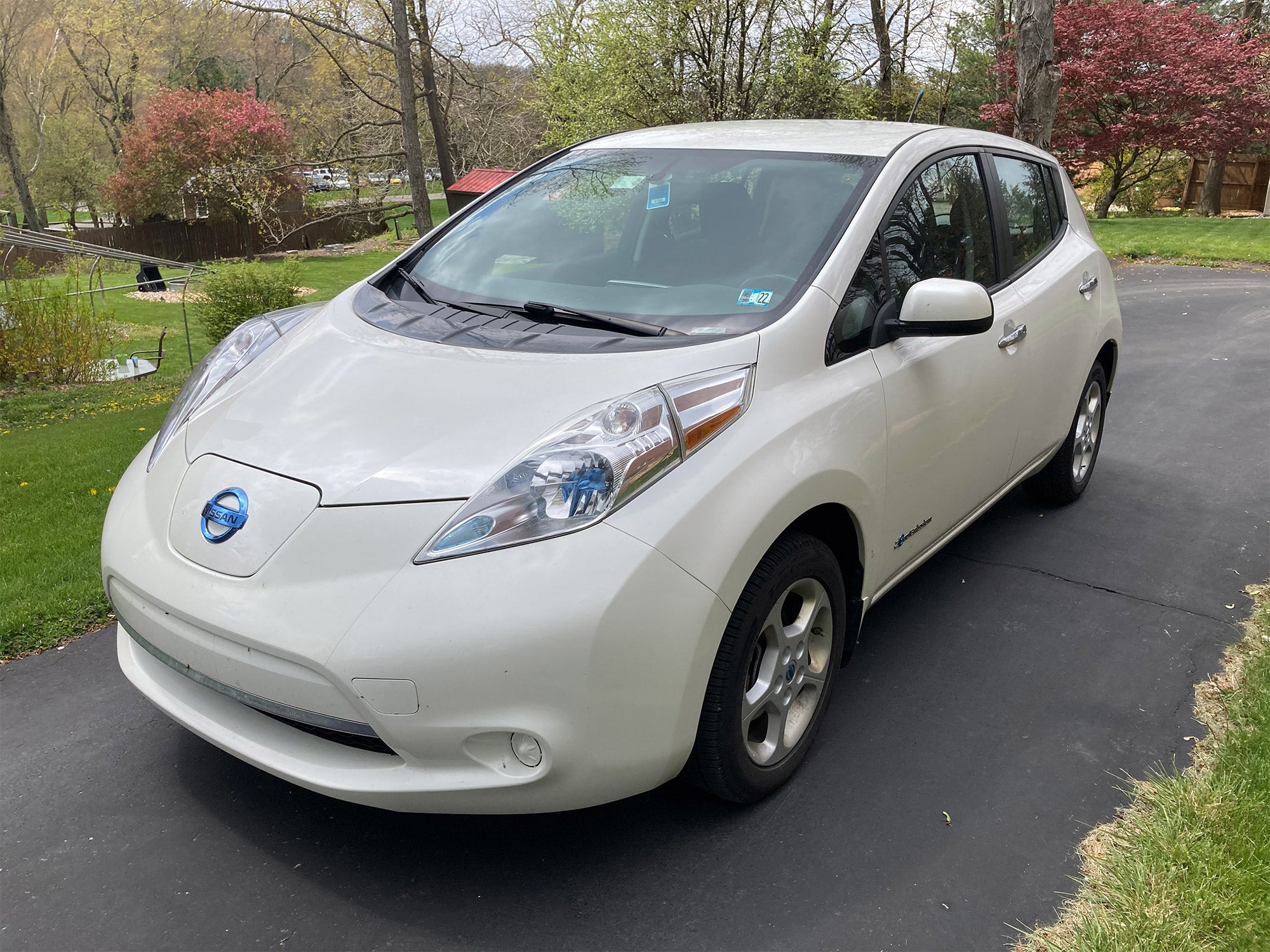
Grant from Pittsburgh drives a 2013 Leaf, one of the early models with a 24 kWh battery pack. When new, this car would have had an EPA-estimated 121 km range. The computer indicates 113 km when fully charged, but a year ago, the car lost one bar on its capacity indicator. That would suggest that the car is operating now with 85 per cent of its initial capacity.
Today, there’s 104,607 km on the odometer. For the first four years he had the car, Grant used Level 1 charging, equivalent to a standard household outlet. After that, he installed a Level 2 240-volt, 32-amp charger.
It’s worth noting that one of the Leaf’s distinguishing factors, compared to many other modern EVs, is Nissan’s decision to forgo active cooling for the battery pack. This means the battery is more susceptible to overheating, which harms its capacity over time and thus, its range. Unfortunately, it’s a trait that has remained in the second-generation model as well.
The issue can be somewhat mitigated by relying on slower charging methods, as the Leaf owners mentioned here have done — though it still tends to result in batteries that don’t last quite as long as those in cars with active cooling. Geotab, a fleet management firm, recently reported that a 2015 Leaf demonstrated nearly double the annual battery degradation rate of a Model S built in the same year: 4.2 per cent versus 2.3 per cent.
Martin’s 2013 Ford Focus Electric

Martin purchased his 2013 Focus Electric the Jalopnik way: secondhand, sight unseen from a dealer states away. His Focus was a California car that now resides in Phoenix. Today it has about 86,905 km logged. When Martin first purchased the hatchback, he was able to charge it in a parking garage with Level 2 power, but now the car mostly charges at Level 1 speeds from the driveway.
This Focus is still on its original battery pack, and Martin reports a minimal drop in maximum range of at least 6 km, compared to when the car was new. (The EPA-certified range for these was 122 km.) Not too shabby for a vehicle that appears to have spent most of its days in hot climates.
BOSdriver’s 2016 Hyundai Sonata PHEV
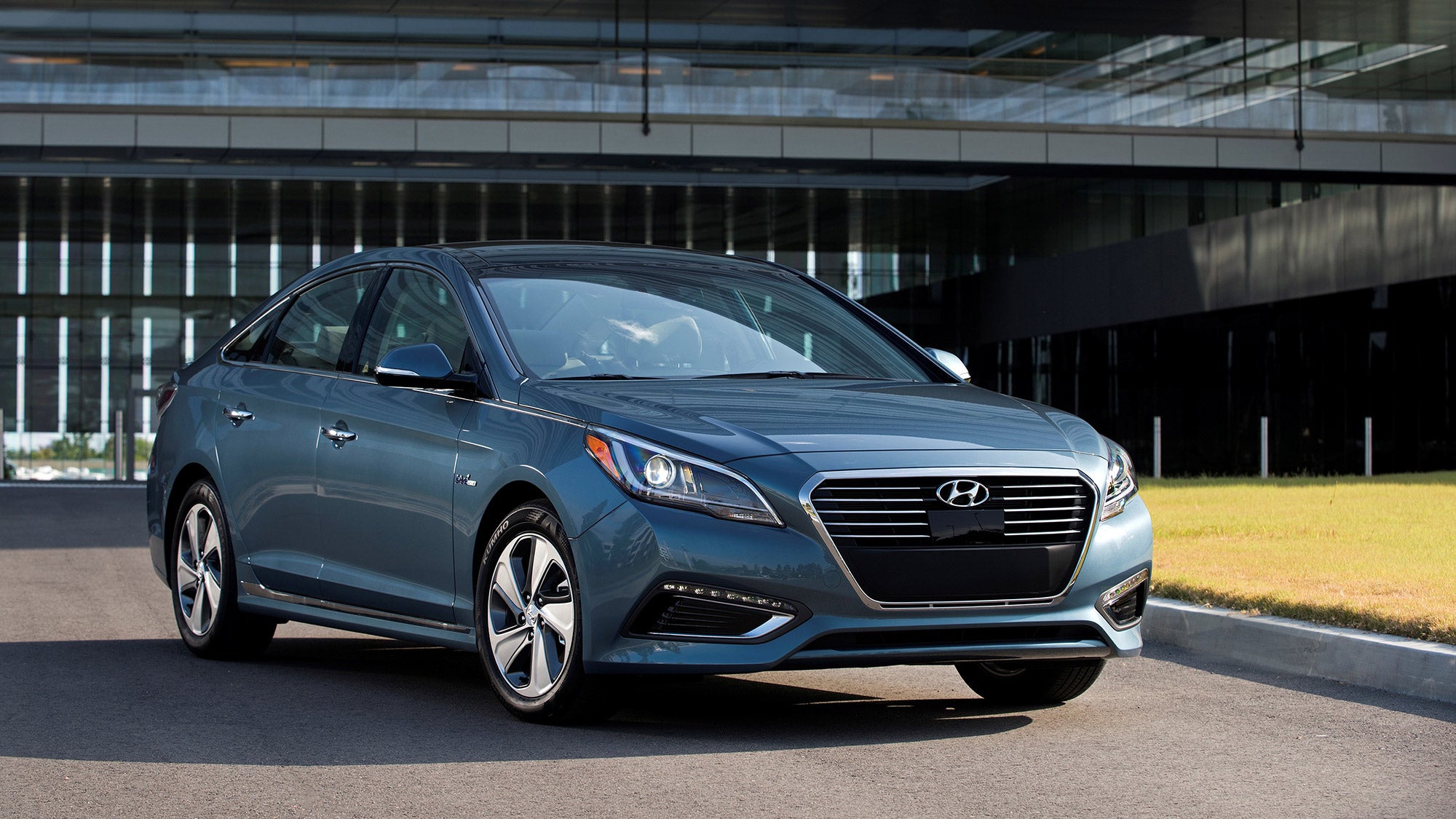
Finally, we come to reader BOSdriver’s contribution, which is a 2016 Hyundai Sonata plug-in hybrid — a car I completely forgot Hyundai even built in the first place. BOSdriver picked it up new and put 118,428 km on it before trading it in for a new Sonata N Line in February.
Still, the PHEV served its owner well, even though it displayed some depreciation in capacity during ownership. “The car used to go 30-32 miles on electric only but by the time I traded it I was around 22-39 km of EV travel. Gradually slowed over time.” The Sonata’s battery was never replaced, and BOSdriver says the car was usually charged at home, nightly, via a 110-volt outlet.
BOSdriver says their commute ultimately made the Sonata PHEV infeasible, noting that they “weren’t saving any money” driving it. “It was great when I could do half of my commute nearly completely on [electric power] only, but that was only for a year or two, under specific weather and traffic conditions,” they said. “Unfortunately, my commute was just out of range. I thought I would go full EV when replacing it, but for the price point I wanted to be in I could not find a comparable car.”
Charging Slow And Low Is The Way To Go
Given the small sample size of the vehicles discussed here, we can’t make any blanket statements regarding average EV battery health expectancy or anything of that nature. Still, this exercise has produced at least one valuable takeaway.
The constant between all these examples — no matter the climate the car was used in or its make and and model — is that each owner stated they either largely avoided fast charging or couldn’t fast charge (as is the case with PHEVs). Additionally, some expressed they were careful never to keep their cars fully charged or let them discharge to near-empty states.
Those practices fall in line with recommendations from experts at the Institution of Mechanical Engineers regarding fast charging and researchers from the scientific journal Energy Reports regarding charging to full capacity. They’re especially worth keeping in mind as more EVs hit the market capable of superfast 800-volt charging, like the Porsche Taycan and Hyundai Ioniq 5.
Obviously Level 1 and 2 charging isn’t going to work for every owner in every scenario; the slow speeds favour cars with smaller batteries, like plug-in hybrids tend to have. Still, these stories remind us that it’s in the best interest of the battery’s long-term health to be prudent about how you’re topping it up, as well as to what level. That’s doubly true for those who reside in parts of the country that regularly see very cold or hot temperatures.
I’d say the batteries in most of these EVs have held up pretty respectably considering their age. That the vast majority of owners who reached out didn’t express any serious disappointment with how their range has diminished over time should ease the minds of prospective first-time EV buyers.
